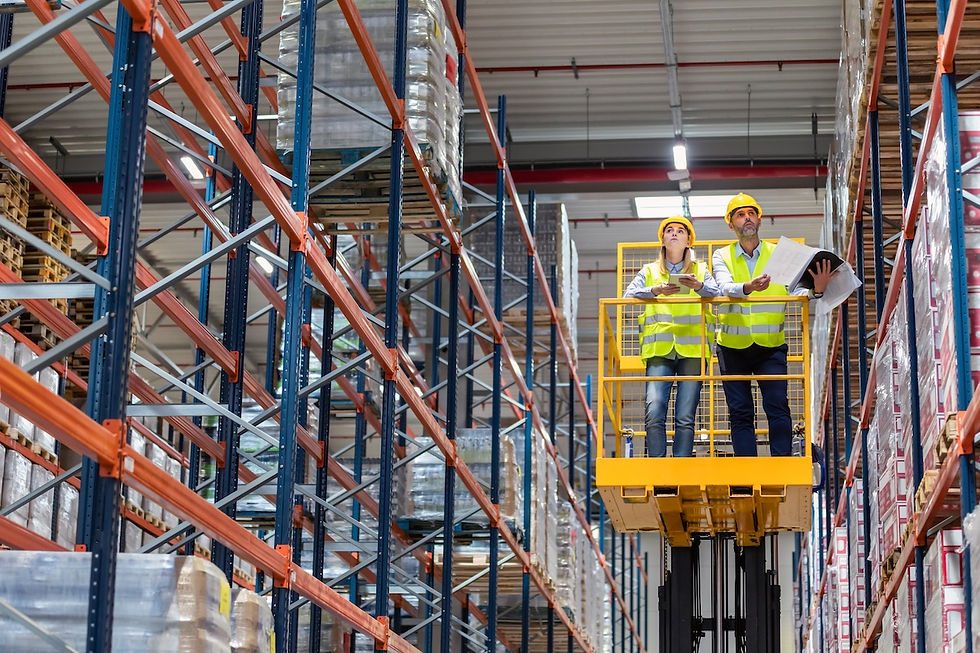How Seasonal Trends Impact Shipping Costs
- zachsievert15
- Jul 24
- 4 min read
Shipping costs don’t stay the same all year long—and for good reason. Retail demand, weather patterns, holidays, and global events all cause fluctuations that impact what you pay to move goods from point A to point B. For ecommerce businesses, understanding how seasonal trends impact shipping costs can help you plan ahead, avoid budget surprises, and keep customers happy with fast and reliable shipping. Whether you're running an ecommerce warehouse or partnering with fulfillment companies, knowing when and why rates change can make a big difference in your bottom line.

Table of Contents
Why Seasonal Trends Impact Shipping Costs More Than You Think
One of the most obvious seasonal impacts comes from the holidays. As early as October, ecommerce fulfillment centers start seeing a surge in order volume. This growing demand leads to peak season surcharges from shipping and freight companies. Carriers like FedEx, UPS, and USPS often raise rates between October and January to cover the cost of hiring temporary staff, managing overflow, and ensuring on-time deliveries.
For brands, this means higher costs per package and potential delays in transit times. The fourth quarter is also when customer expectations are at their highest, making fast and reliable shipping even more essential. To stay competitive, many businesses absorb these higher shipping costs or adjust pricing temporarily. If you don’t plan early, these seasonal spikes can strain both your budget and your ability to meet delivery deadlines.
Weather Disruptions and Delays
Winter storms, hurricanes, and even extreme heat waves can disrupt transit schedules and add unexpected fees. Weather doesn’t just affect trucks and planes—it also impacts warehouse operations, especially when fulfillment centers or carriers in affected regions are forced to shut down.
These delays ripple across the supply chain, resulting in lost sales or customer dissatisfaction. Planning ahead for seasonal weather risks and building in buffer times for fulfillment and delivery can help reduce the chance of late arrivals. Many ecommerce brands also keep customers informed through real-time tracking or delay notices to maintain trust and transparency.
Back-to-School and Seasonal Retail Cycles
If your business relies on seasonal products, understanding these cycles and syncing your inventory and fulfillment schedules can reduce shipping delays and improve margins. Partnering with a fulfillment company that understands these trends can help you get ahead of the crunch. In some cases, even adjusting your promotions by just a week or two can help you avoid peak congestion and save on costs.

Global Events and Supply Chain Surges
Beyond traditional seasons, there are unpredictable waves caused by global events. The COVID-19 pandemic taught us how quickly ecommerce can skyrocket and how fragile global supply chains can become. Port congestion, container shortages, and flight cancellations all contributed to rising costs and delays.
Even without a global crisis, major trade events, labor strikes, or political changes can temporarily disrupt shipping and freight operations. Staying informed about these trends and having contingency plans in place can help you minimize disruption and maintain delivery schedules. Businesses that built agile supply chains have shown better resilience during periods of high volatility.
Difference Between Freight and Shipping During Seasonal Peaks
It’s important to understand the difference between freight and shipping when navigating seasonal cost changes. Freight generally refers to large-scale or bulk transportation—think pallets or containers. Shipping is more commonly used for smaller parcel deliveries.
During busy seasons, both freight and shipping costs increase, but they do so in different ways. Freight rates may be affected by port congestion or long-haul trucking shortages, while shipping rates often spike due to last-mile delivery demand.
Ecommerce brands that rely on both methods need to monitor each area closely. For instance, getting products from overseas (freight) might take longer during Lunar New Year due to factory closures, while domestic deliveries (shipping) may slow down due to snowy roads in January. Being able to anticipate these impacts lets businesses allocate inventory more strategically.
Strategies for Reducing Shipping Costs Year-Round
While some seasonal changes are out of your control, there are practical steps businesses can take to reduce shipping costs, even during peak times:
Negotiate better rates with carriers. Loyalty and volume can earn you better terms.
Use zone skipping or regional carriers. These options can bypass national surcharges and deliver faster.
Diversify your carrier mix. Relying on a single provider can be risky, especially if they’re overwhelmed.
Implement smart packaging. Reducing dimensional weight or unnecessary filler saves money.
Leverage a reliable ecommerce fulfillment partner. The right partner can consolidate orders, optimize routes, and adapt quickly when demand spikes.
Forecast demand accurately. Using past data and sales projections helps avoid last-minute rush fees.
By combining these tactics, you’re better equipped to handle price surges and avoid passing costs to customers. Reducing shipping costs becomes a year-round effort rather than a last-minute scramble during busy periods.

How FlatOut Fulfillment Helps Navigate Seasonal Shipping
At FlatOut Fulfillment, we work with brands to understand how seasonal trends impact shipping costs and to create proactive strategies that minimize disruptions. Our ecommerce warehouse is optimized for flexibility, allowing us to scale quickly during peak times and maintain high service levels when shipping and freight demand surges.
We also work closely with a network of trusted shipping and freight companies to offer competitive rates and help our clients with reducing shipping delays during high-volume periods. Whether you’re planning for holiday sales, launching a seasonal line, or just looking to streamline logistics, our fulfillment services are built to adapt.
Ready to take control of your shipping strategy? FlatOut Fulfillment offers customized support, flexible logistics, and expert insights to help your brand stay ahead of seasonal shipping challenges. Contact us to learn how we can support your ecommerce success.



